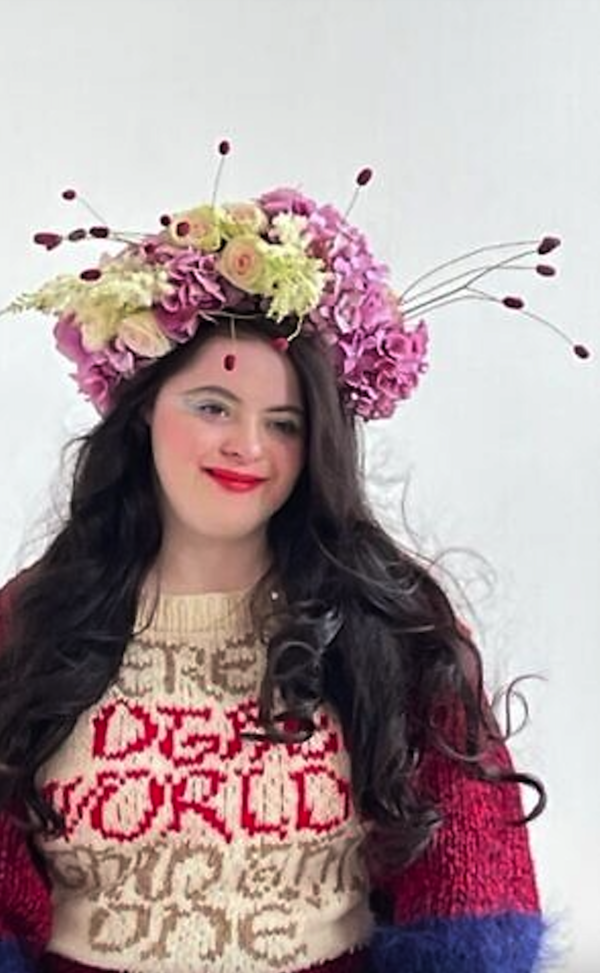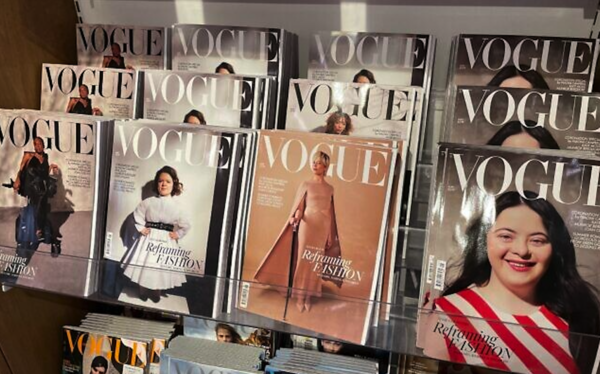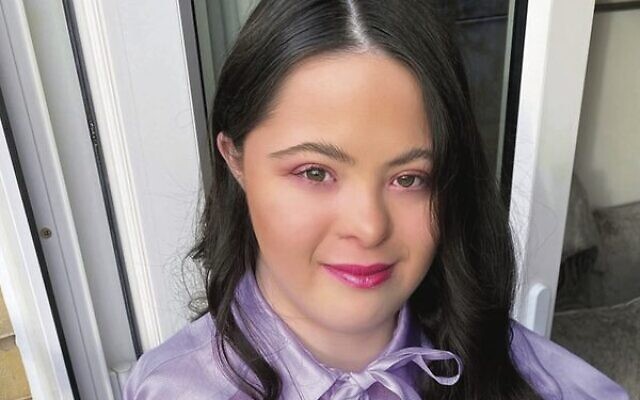Model shows a global face for inclusivity
Recently seen on the cover of British Vogue and an inspiration for a new Barbie doll, at only 155cm and born with a disability, Ellie Goldstein is not your average supermodel, writes Renee Ghert-Zand.
At 21, Ellie Goldstein has already reached modelling career heights that most can only dream of: She snagged the cover of the May 2023 issue of British Vogue, starred in a recent Gucci beauty campaign and appeared in a Adidas video.
Goldstein, a British fashion model with Down syndrome, has clearly taken the world by storm.
“I love seeing myself on billboards, but I was most excited to see myself on the cover of Vogue. It was my dream to be on the cover of Vogue and now I am!” Goldstein told The Times of Israel.
The younger of two daughters in a Jewish family from Ilford, Essex, the outgoing Goldstein developed an interest in makeup and fashion early on. By age 15 she was signed by the international Zebedee inclusive modelling agency.

According to the agency’s UK website, it “champions disabled, visibly different, non-binary, and trans models”.
Founded in 2017 by Laura Winson and Zoe Proctor, Zebedee is “committed to changing the way disability, visible difference, and gender identity are represented in fashion and wider media”.
A breakout talent, Goldstein figures prominently on the agency’s site, which features examples of her work, including covers of Glamour, Elle, Mission and Euphoria. She also has over 90,000 followers on Instagram, where she posts highlights of her photoshoots.
Her vivaciousness and comfort in the spotlight come through in fashion campaigns, commercials, TV and on the catwalk.
“I like being in front of the camera and being glamorous and fabulous,” she said.
Goldstein, who has long dark brown hair and green eyes and is only 155cm tall, is not a conventional model – but she is not letting that stand in her way.
“What makes Ellie’s journey even more remarkable is that she has Down syndrome, and despite the industry’s historically narrow view of beauty, Ellie is breaking down barriers and changing the face of fashion to be more inclusive. Her success is a testament to the fact that the fashion world is ready and eager to embrace diversity, and it makes me so proud to be a part of this positive shift,” said Zebedee Talent women’s booker Amy Mistry.
When Goldstein is not travelling, accompanied by her mother Yvonne, to places like Milan, Sweden and Germany for modelling gigs, she is a university student focusing her studies on drama and performing arts. She also loves to dance hip-hop, and often shows off her moves in videos she posts on social media.

Goldstein said she loves to get made up for photo shoots and wear gorgeous clothes, especially sparkly ones. However, when she is home, she wears dresses or kicks back in a comfy pair of jeans.
When this reporter noted that she was wearing a pink top and had purple nail polish on her fingernails, she shared that those are her favourite colours.
“And also burgundy,” she noted.
Goldstein said that she hopes the next stage of her modelling career takes her to New York, where she wants to continue breaking down barriers not only for herself but for others as well. It’s important for her to be a face of inclusivity and diversity and to open doors for others with differences or disabilities.
She is already doing this by channelling her fame toward being an influencer and role model for younger girls with Down syndrome. For example, she helped launch Mattel’s first Barbie with Down syndrome, which is part of the company’s Barbie Fashionistas line highlighting diversity.
“It’s like me, and it’s beautiful, and I love it to pieces … She’s a glamorous, gorgeous, pretty darling. And she is perfect like me and I am perfect like her,” Goldstein says in a video in which she introduces the doll.
The Barbie has the facial features and body shape typical of individuals with Down syndrome and wears a necklace with “The Lucky Few” three-arrow design, which has become a symbol for the resilience of children with Down syndrome and their parents. The three arrows represent trisomy 21, or the fact that children born with Down syndrome have an extra copy of chromosome 21.
In addition, the pattern of the doll’s dress is primarily blue and yellow, the colours of the Down syndrome awareness ribbon.
During an appearance Goldstein and her mother made on a British morning show, both women noted how wonderful it would have been had there been such a doll when Goldstein was a girl.
“It’s all about visibility and inclusion. There wasn’t any of that when Ellie was growing up,” her mother said.
Goldstein also has a book coming out in September titled Against All Odds. Written with the help of a ghostwriter, it is the first book in English writer and activist Katie Piper’s UnSeen series for SPCK Publishing.
Goldstein has written about how when she was born, doctors warned her parents that she wouldn’t be able to walk or talk. They were told not to expect much from their daughter and that she would probably amount to nothing.
Goldstein has proven those doctors wrong countless times over as she goes from strength to strength.
With the support of her family, she always believed she would grow up to become what she wanted to be.
“My message to everyone is to be yourself, never give up on your hopes and dreams, and be happy,” she said.
Times of Israel


comments